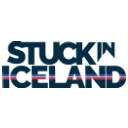Free and exclusive discount codes for hundreds of tours and & travel services in Iceland
Subscribe to instantly receive discount codes for tours, car rental, camper van rental, and outdoor clothing rental. Thank you! ❤️ Jon Heidar, Editor of Stuck in Iceland Travel MagazineIn a land where fire meets ice, Rico de Jong has found his element. The 24-year-old Dutch photographer and videographer didn’t just move to Iceland for his master’s degree in Volcanology. He moved to chase the raw, untamed beauty of a landscape that refuses to be tamed. With a camera in one hand and an iron rod in the other, Rico occupies a rare space where art and science converge.
By day, he’s a Lava Master* at Lava Show in Reykjavík (Disclosure: I am the Sales and Marketing Manager at Lava Show). There, he manipulates molten rock fresh from the furnace, demonstrating the primal forces that built Iceland itself. Rico is one of my fantastic colleagues at Lava Show, and in his role, he uses an iron rod to manipulate the molten lava to the delight of the audience.
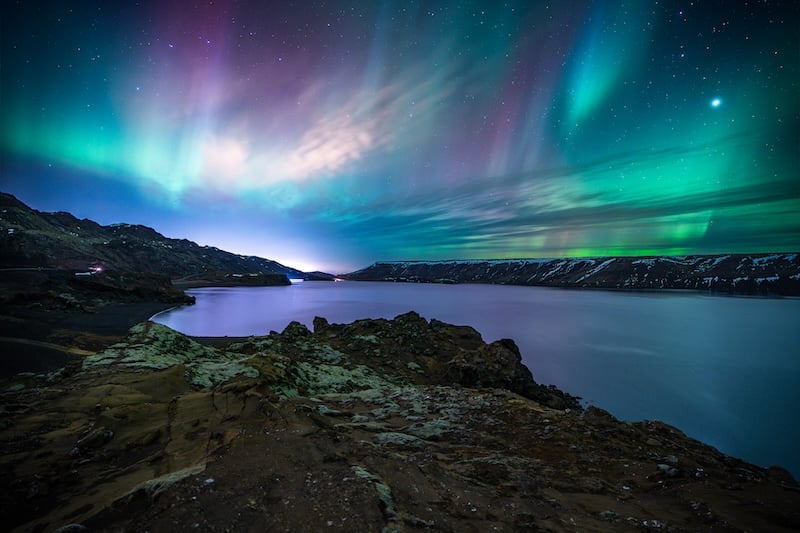
But when the earth cracks open on the Reykjanes Peninsula, Rico is there. He’s documented most of the eruptions in this remarkable volcanic sequence, launching his drone into the heart of the action to capture footage that’s both scientifically valuable and visually stunning—glowing rivers of lava carving through the dark landscape, fountains of molten rock illuminating the night sky, the raw power of creation itself.
His images don’t romanticize Iceland; they show it as it is: gritty, real, and utterly majestic. Over the past decade, Rico has honed a photographic style that keeps “as close to reality as possible.” However, his images pulse with the same elemental energy as the lava he works with daily. Through his work, he’s become not just a documenter of Iceland’s landscapes. Rico is an interpreter of its volcanic soul. Someone who understands the science behind the spectacle and can share both with the world.
You left the Netherlands to pursue volcanology in one of the most geologically active places on Earth. What was that moment like when you realized Iceland was calling you, and had the reality lived up to the dream?
I’ve always been fascinated by the outdoors, mountains, and natural disasters. Volcanoes especially caught my attention early on. I remember watching documentaries about Eyjafjallajökull and Laki as a kid. That probably planted the first seed. As I got older, I realized that many things I enjoyed, like skiing, hiking in real mountains, and being in dramatic landscapes, just weren’t possible in the Netherlands. I was getting more serious about photography. Iceland kept showing up as this place with endless opportunities for landscape and nature photography. Even before I moved here, Iceland already felt familiar in a strange way.
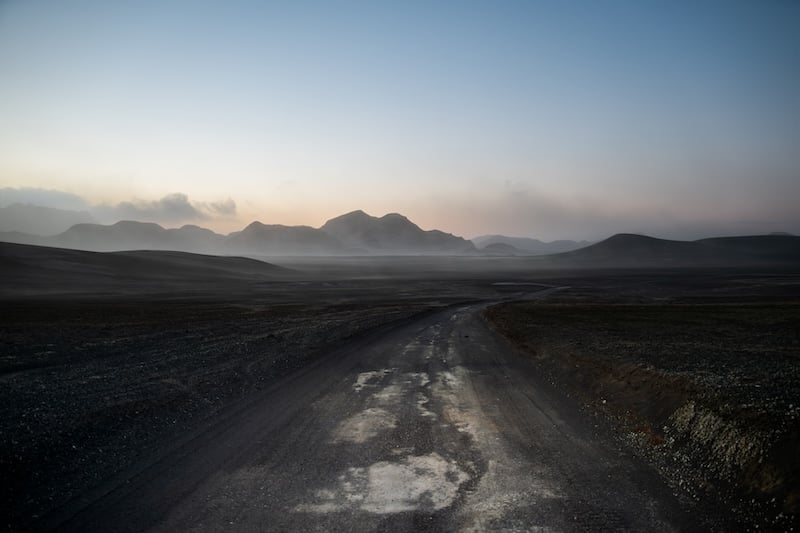
Then COVID happened. I spent months studying Earth Science online from my bedroom. It was during that time that the 2021 Fagradalsfjall eruption started. The livestreams became the thing that kept me motivated through long days of online classes. I can’t count how many times I opened a booking page for flights to Iceland. It always felt like the place I should be.
In 2022, I got the opportunity to do a six-month exchange abroad. I narrowed it down to Canada or Iceland. I kept going back and forth for weeks, but in the end, my gut told me to choose Iceland. So I packed my small car completely full, took the ferry, and arrived just as an earthquake swarm started on the Reykjanes Peninsula. Within a week of being in the country, I witnessed my first volcanic eruption up close. That experience pretty much confirmed that I’d made the right choice. I felt connected to the place straight away.
Leaving after six months was difficult. On the day I took the ferry back, the hotel owner we’d been staying with told me, “I’m not saying goodbye, something tells me you’ll be back soon.” And she ended up being right.
Back in the Netherlands, I tried to continue studying. I attempted multiple master’s programs, but none of them felt right. I couldn’t shake the feeling that I was trying to force myself into something I didn’t want. My thoughts kept drifting back to Iceland, the landscape, the eruptions, the photography opportunities, and the general feeling of being in a place that fit me.

After about a year and a half of trying to settle again, I finally accepted that I wasn’t going to be happy staying in the Netherlands. So I applied for the volcanology master’s program at the University of Iceland. When I got accepted, I moved back two months later. Now, a little over a year later, I can say it was the best decision I’ve ever made. My photography & videography have improved a lot, I’ve met great people, and I’ve been able to witness four more eruptions. Iceland has become the place where everything I enjoy (nature, science, adventure, and photography) comes together naturally.
You’ve been present at most of the eruptions on the Reykjanes Peninsula, capturing stunning drone footage and photographs. What’s it like being there as both a scientist and an artist? How do you balance documenting the eruption for your studies versus capturing it for your creative work?
My scientific work at the moment focuses on faults in the Reykjavík area that formed during earlier periods of activity, similar to what we’re currently seeing on the Reykjanes Peninsula. I use drone imagery to create 3D models of these faults. I try to understand when they last moved and how likely they are to move again. That information can then be used for risk assessments. When I go to an ongoing eruption, I’m usually not there in a scientific role. It gives me the freedom to focus on the creative side. Flying the drone, finding good angles, watching how conditions change, and trying to capture what the eruption is like without overthinking the academic side too much.
However, the geology background is still there in the back of my mind. It’s hard not to notice the details: how the cone is growing, how the lava channels are forming, or how the flow direction has changed. Those observations sometimes help guide the shots I take. Understanding what the volcano is doing makes it easier to anticipate interesting moments.
The part where the science really makes a difference is safety. These eruptions can look calm and accessible (hence their nickname: tourist eruption). This is why they attract so many people. However, they’re still unpredictable natural events. Knowing how to read the landscape, how fast lava can move, where gas might accumulate, or what weak points in a cone look like makes it much easier to stay aware of potential risks.
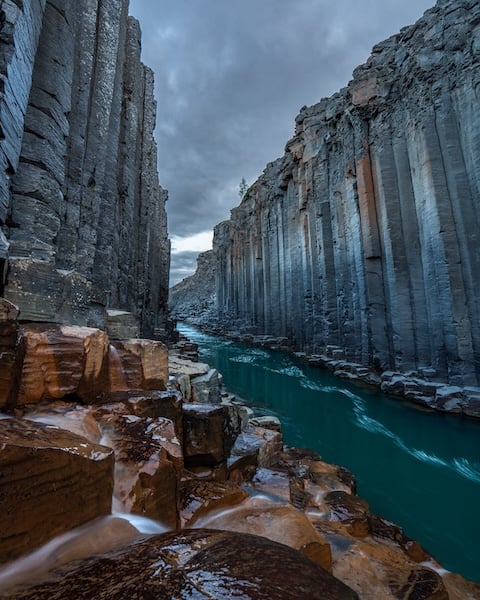
So the balance often happens naturally: the artistic side helps me capture the experience, while the scientific side helps me understand what I’m looking at and how to approach it safely. In a way, both roles end up supporting each other.
Your photography style is to keep images “as close to reality as possible,” yet your work—especially your eruption footage—captures something deeply dramatic about Iceland. How do you balance that naturalistic approach with the inherent drama of volcanic landscapes?
With how common AI-generated images and heavily edited photos have become, I think it’s more important than ever to show what things actually look like in real life. My goal is to keep my photos as true to the scene as possible: the actual colours, the real sky, and the light as it was. I’ll clean up a photo and adjust exposure or contrast, but I don’t replace skies or add things that weren’t there. I want people to recognize the real Iceland when they look at my work.
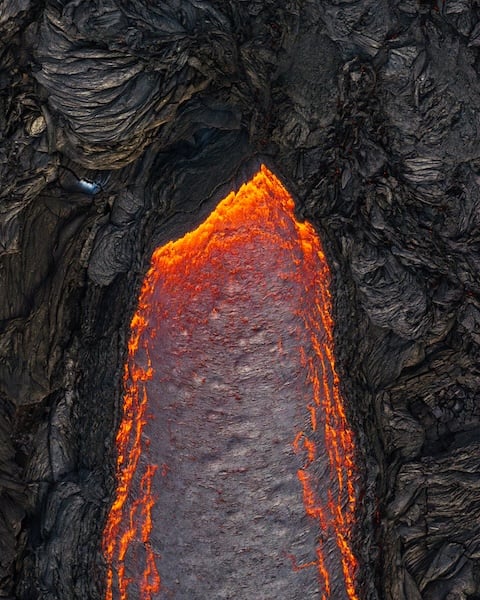
The good thing is that Iceland already looks dramatic without needing any help. Lava against black basalt, or bright green moss next to snow, naturally creates strong contrasts. The light here also changes so quickly that sometimes just waiting five minutes gives you a completely different atmosphere. So the drama in my photos comes from the landscape itself, not from editing.
Another part of staying natural is trying to show what it felt like to stand there. Volcanic activity has a very raw look to it, the brightness of the lava, the movement of the fountains, the steam rising, and if you expose it properly, it already looks powerful. My aim is to keep that balance: images that are visually strong but still realistic enough that if someone visited the same place, they would recognize what they’re seeing.

In the end, I want my photos to be both honest and interesting. The landscape here provides the drama on its own; I just try to capture it in a way that reflects what was actually happening in that moment.
Being a Lava Master is a job that doesn’t exist anywhere else in the world. After photographing real eruptions in the field, what’s it like working with molten lava indoors? Does handling actual lava in the controlled environment of Lava Show change the way you approach the unpredictable eruptions outside?
Before moving to Iceland, I hoped that one day I might be allowed to take a lava sample. I never expected to end up working with molten lava daily, so it’s still a bit surreal.
Handling lava indoors definitely gives me a better sense of what to look out for in nature. Fresh lava releases an insane amount of heat that you cannot imagine without having experienced it yourself. The worst of this heat gets blocked once the lava forms a crust. This crust, however, is unpredictable since it can break open suddenly. Working with it regularly teaches me the distance I can safely get to lava without putting myself in unnecessary danger. Something I definitely lacked during my first-ever visit to a volcano. The most impressive part to me is that you can see processes happen right in front of you. You can see the lava go from a watery liquid to a solid in front of your eyes.
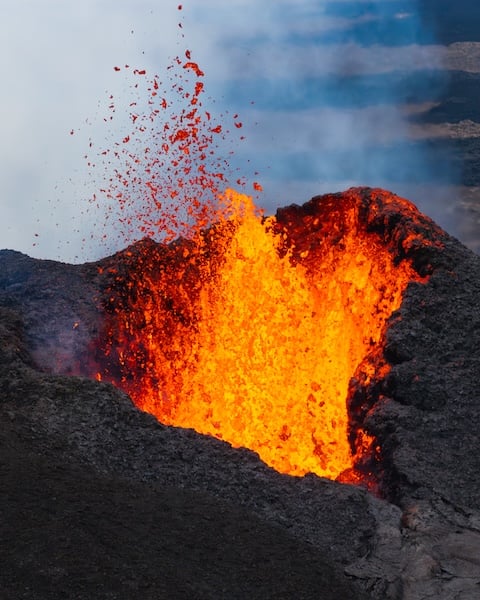
You combine your imagery with educational content about geology and environmental impact. What do you hope viewers take away beyond just appreciating a beautiful photograph or dramatic eruption video?
Nature has always been important to me. I think the only way people can truly appreciate and protect it is if they understand it. With geology, especially, there’s still a big gap between what people see and what they actually know about the processes behind it. A lot of geological concepts are complex. In school, they often get simplified so much that the real meaning gets lost.
Through photography and videography, I can bridge that gap a bit. When someone sees a lava flow, a collapsing crater rim, or a new vent opening, it’s naturally interesting — and that makes it easier to explain what’s actually happening. Instead of trying to simplify an entire eruption into one easy explanation, I can focus on one small detail and explain that accurately. People tend to remember it better when it’s connected to something visually engaging.
I also think that understanding leads to respect. When people know why an area is special or how fragile it is, they’re more likely to treat it responsibly. That applies to volcanic areas, but also to moss, geothermal features, and Icelandic nature in general. A lot of damage happens simply because people don’t know the impact of what they’re doing.
My goal isn’t to turn viewers into geologists. It is more about giving them a clearer picture of what they’re seeing, so they walk away with a new piece of knowledge instead of just a “cool lava video.” If my content can make someone appreciate nature a bit more, or spark curiosity about how the Earth works, then that feels meaningful to me.
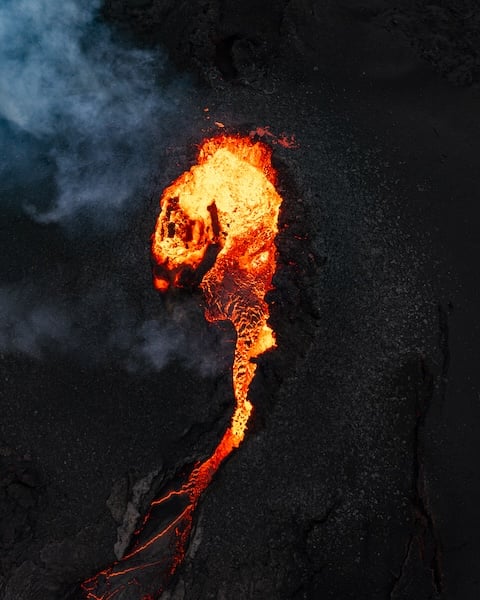
Looking ahead, where do you see the intersection of your scientific work and your artistic vision taking you? Are there volcanic phenomena or locations beyond Iceland you’re dreaming of capturing next?
Even though I’m studying volcanology, I don’t necessarily see myself building a full career in science. What drives me more is being out in the field, experiencing nature directly, and documenting it in a way that’s both accurate and engaging. The scientific background helps me understand what I’m seeing, but the creative side is what motivates me most. I grew up watching nature documentaries. These were made by people like Jacques Cousteau, Sir David Attenborough, and Freek Vonk (the Dutch Steve Irwin). Seeing how they explained the natural world in a way that was both educational and exciting had a big influence on me. For as long as I can remember, I’ve wanted to create something similar, a mix of adventure, storytelling, and real science.

My hope is to combine the skills I’m developing now, the scientific side from university, and the visual side from photography and videography, into something that can inspire others. If I can make geology feel more accessible and show people why these processes are fascinating, then I’d feel like I’m doing what those documentaries did for me when I was younger.
In the future, I’d also love to document volcanic activity outside of Iceland. Iceland has been an incredible place to learn, but there are so many different types of volcanoes around the world. Places like Hawaii with its long-lasting flows, the lava lake in the Democratic Republic of Congo, or the explosive volcanoes in Kamchatka all offer completely different stories and challenges. Experiencing and documenting those environments would help me grow both scientifically and creatively.
For now, I’m still early in my journey. Everything I’ve witnessed so far, from the first eruption I saw in 2022 to the ones I’ve documented recently, has helped me improve how I tell these stories. I’m hoping that over time, the combination of science and visual storytelling will open doors to new opportunities. Perhaps it may even lead me to create he kind of documentary content I’ve always admired.
*Lava Show has two unique job titles that do not exist anywhere in the world. First of all, it is Lava Master, which is the title of the people who perform our shows. The second title is Lava Melter, and yes, you guessed it, that is the title given to people who oversee the tricky job of melting basalt rocks to over 1.100 degrees Celsius (2.000 Fahrenheit) in a massive furnace. I am qualified for neither!
Meet Photographer and Lava Master Rico de Jong

